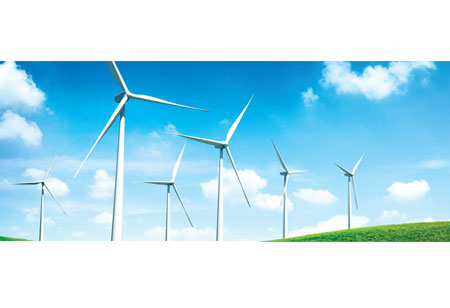Energy use in Asia-Pacific will grow dramatically over the next decade and indeed, for the next hundred years. As a whole, the Asia Pacific region which is expected to use 133 percent more commercial energy in 2010 than it did in 1995. In economically dynamic East Asia, commercial energy demand will double & electricity-generating capacity is expected to nearly quadruple.
The fundamental component of renewable energy, which is abundant and well established, is free. Eight nations own 81 percent of the world's proven reserves of crude oil, six countries hold 70 percent of the world's proven stocks of natural gas, and eight countries hold 89 percent of the world's proven deposits of coal. Over half of the commercial energy used in Asia, Africa, and Latin America is imported. The majority of these nations purchase energy at high prices while exporting crops at low prices, which reduces their ability to generate foreign cash. The fact that power generation in these nations is always rising makes this problem worse. Additionally, the global population is growing at a rate of 1.3 to 3.2 percent annually, doubling every 60 years.
Therefore, in the year 2060, no doubt the expected population will be not less than 12 billion. While there has been good progress in installing renewable energy systems in recent years the base is relatively small and the industry is still young. But the industry's strength is that it remains buoyant and positive. There is still much to do if IEA countries are to effectively increase the share of renewable energy in total energy supplies and promote renewable energy worldwide. There are several issues which will affect the rate of market uptake of renewable energy sources.
-
Solar PV remains the powerhouse of growth in renewable electricity, with its capacity additions forecast to increase by 17 percent in 2021 to a new record of almost 160 GW.
Asia Business Outlook Team
A-PAC Countries & their Ravenous Appetite for EnergyThe explosive hunger for energy is prompting structural changes in Asian economies, primarily a move toward greater reliance on domestic, regional and global energy and financial markets to meet energy demand. The transition towards marketization will present governments with new policy imperatives and options. Given the increasing level of globalization, the most powerful policy instruments those which shape market incentives will be those undertaken collectively.
In a different scenario, thoughtful decisions in the energy sector about energy supply sources, technology, infrastructure investment, pricing and trade laws, and, most significantly, long term goals lead to a more secure and environmental friendly future. Given that regional and global markets are being used to supply energy resources in Asia, how markets are controlled will determine how well the energy industry performs.
The Energy Picture of Asia: A Look Back in TimeRenewable growth has exceeded demand growth in only two years 2019 and 2020. But in those cases, it was largely due to exceptionally slow or declining demand, suggesting that renewables outpacing the rest of the electricity sector is not yet the new normal. Solar PV remains the powerhouse of growth in renewable electricity, with its capacity additions forecast to increase by 17 percent in 2021 to a new record of almost 160 GW. In the same time frame, onshore wind additions are set to be almost one-quarter higher on average than during the 2015-20 period. Total offshore wind capacity is forecast to more than triple by 2026.
 Rapid Expansion of Renewable Projects in the A-PAC
Rapid Expansion of Renewable Projects in the A-PACWith a staggering 60 percent of the world's population, Asia Pacific has the fastest-rising regional energy demand in the entire world. The majority of APAC nations today are dependent on fossil fuels but eager to switch to clean renewable sources. In reality, Asia Pacific has recently outperformed Europe and the United States in the use of renewable energy, partly as a result of the rapid expansion of projects in China, India, and Australia. Since wind and solar energy accounted for only around 6.8 percent of the region's overall energy consumption, fossil fuels became the region's main energy source in order to meet the region's requirement for the most effective energy sources in the entire world.
In this multicultural region, securing clean, affordable, and sustainable energy is crucial for supporting social and economic development. And although while certain APAC nations have invested in and installed clean energy more slowly than others, the region is expected to take the lead in the deployment of renewable resources in the coming decade, installing about 500 GW of non hydro capacity.
World Energy Demand in the Present Times & their Environmental ImpactBy replacing at least a further significant fraction of the use of fossil and nuclear fuels, the accompanying environmental problems would be lessened if renewable energy sources were used on a larger scale than they are now. However, all renewable energy sources have some kind of local environmental impact of their own, ranging from very minimal to severe in the case of the bigger tidal and hydroelectric schemes. The majority of renewable energy sources facilitate various sorts of environmental damage. In the course of operation, almost none of them release liquid or gaseous contaminants. On the other side, there is no issue with reserves running out because renewable energy sources are safe and limitless. With some exceptions, proposed renewable energy sources are local and so cannot be turned off by a foreign power.
What Will Happen to Renewable Energy in the Future? Governmental goals and objectives should be set for the use of renewable energy. These are currently most commonly used in the power sector, but they should also be used in other end-use industries including heating and cooling, industry, and transportation.
The electricity system will need to be made more flexible by governments in order to accommodate renewable energy sources. Non-linear change is a strong force despite the obstacles that must be overcome. Energy sector professionals would be amazed to see how much the cost of renewable energy has decreased and how yearly deployment has doubled if we could travel back in time to a decade ago. In 2030, how horrified will we be? Depending on what we do right now.

